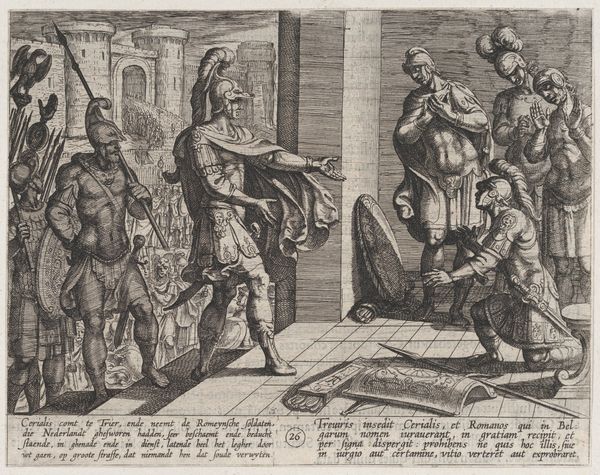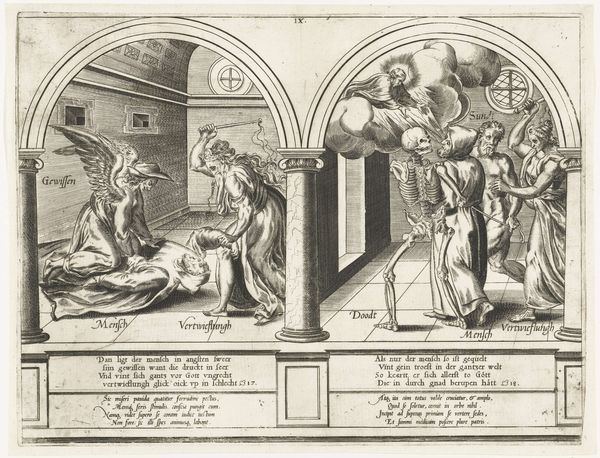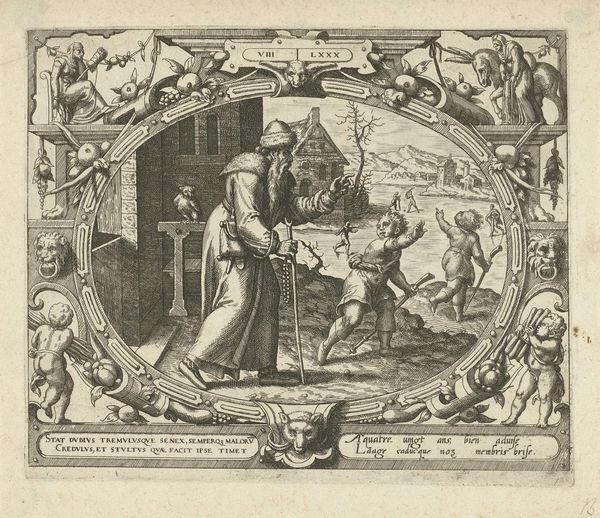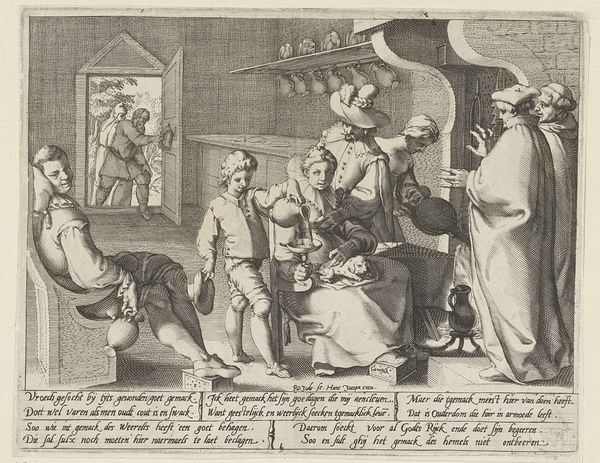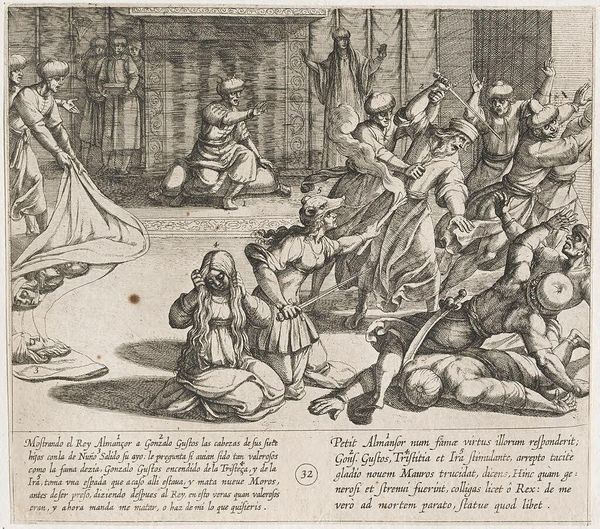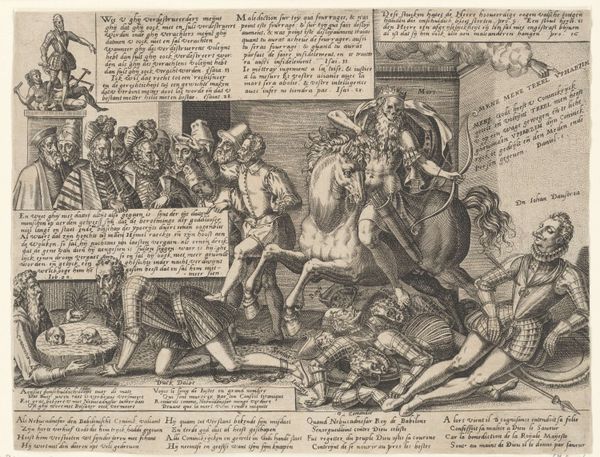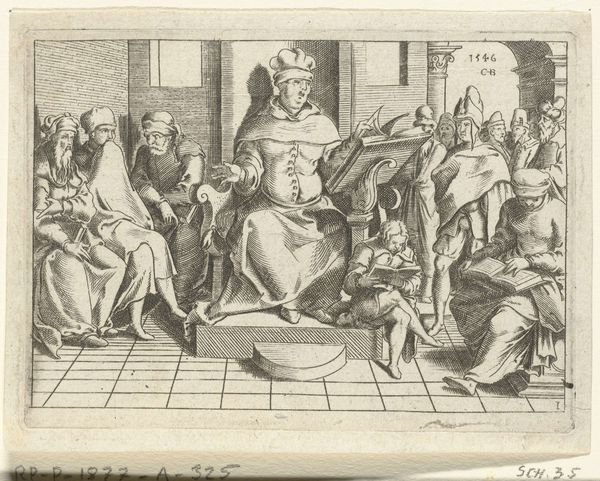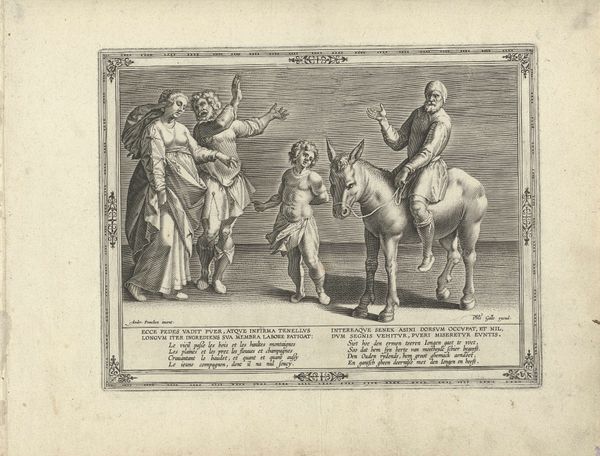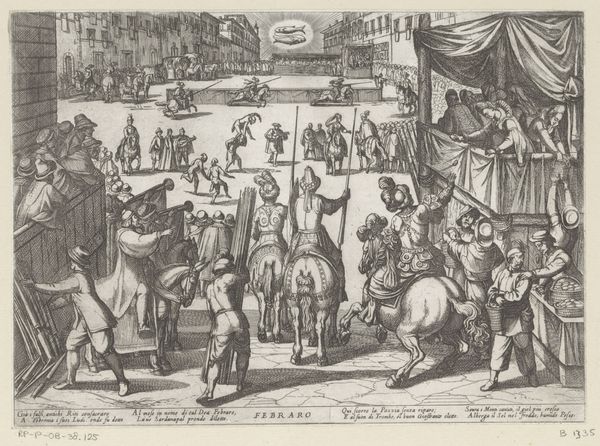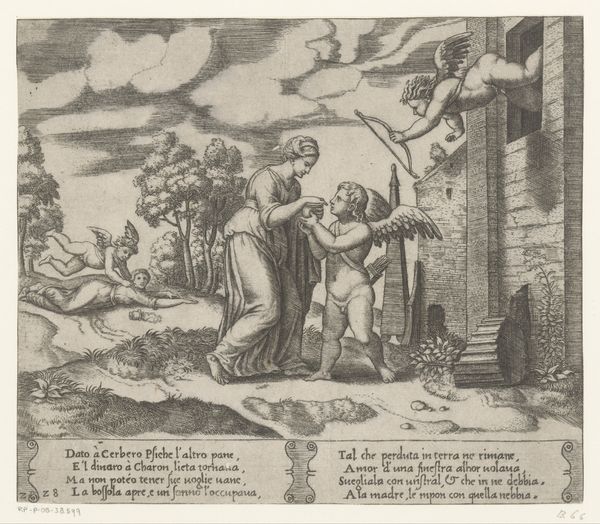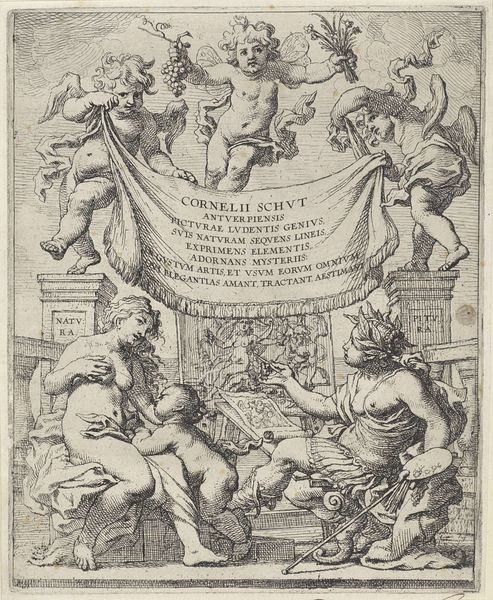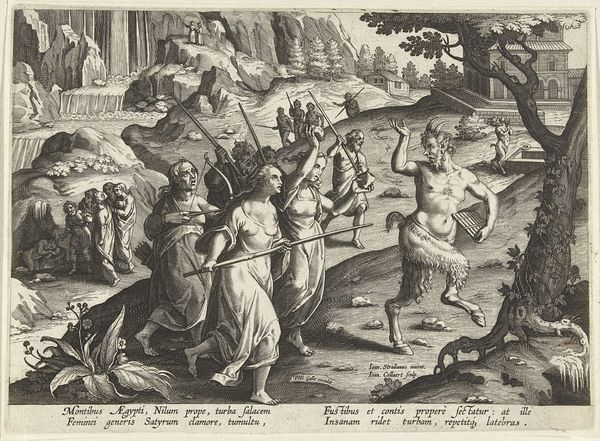
Allegorie met personificaties van de Goede Bedoeling (Bona Intentio) en de Tweedracht (Discordia) c. 1575 - 1590
0:00
0:00
Dimensions: height 235 mm, width 272 mm, height 240 mm, width 280 mm
Copyright: Rijks Museum: Open Domain
Curator: Here we have Jacques de Gheyn's engraving, "Allegory with personifications of Good Intention and Discord," created circa 1575 to 1590. Editor: Immediately, what strikes me is the composition's clever symmetry. The contrasting figures of 'Good Intention' and 'Discord', plus those winged impish creatures. It has a very theatrical stage-like presence. Curator: Absolutely, the composition guides the eye, drawing parallels between the two personified concepts. Note the detailed engraving technique; how precise lines create texture and depth. Editor: Beyond the surface aesthetics, this artwork really digs into the psychological impact of conflict. That figure representing Discord, pointing accusatorily... she embodies a certain kind of spitefulness. It's a potent image, regardless of the era in which it was conceived. Curator: Observe also the architectural backdrop against which these allegorical figures are placed, notice the tapestries hung from the wall to demarcate pictorial planes—each of them adds meaning. Editor: Exactly! That tapestry near 'Good Intention' depicting a fiery battle, versus the calmer, yet still agitated scene of clashing troops beside 'Discord'. There's this constant juxtaposition suggesting that intention and discord both exist alongside violence. It’s an unsettling interplay. The demons tugging on ropes and prodding further illustrate this tension, as does the obscured wheel. Curator: The symmetry we noticed earlier further drives home this allegorical debate on concepts of virtue and corruption within societal structures. This piece showcases De Gheyn’s astute understanding of the visual vocabulary that shapes meaning. Editor: In all, it's more than just lines and forms, it is the very complex relationship between how good intentions and discord operate on society. What a visual study on their emotional impacts. Curator: Agreed, reflecting on the image, I appreciate de Gheyn's sharp commentary. The way he synthesizes artistic form with allegorical narratives offers a strong commentary about 16th-century society. Editor: And for me, reflecting, that the demons or the wheel and their symbolism stay relevant in societies throughout the eras, showcasing conflict in art, history, and modern-day media is a relevant reminder of how easily disagreement morphs.
Comments
No comments
Be the first to comment and join the conversation on the ultimate creative platform.
